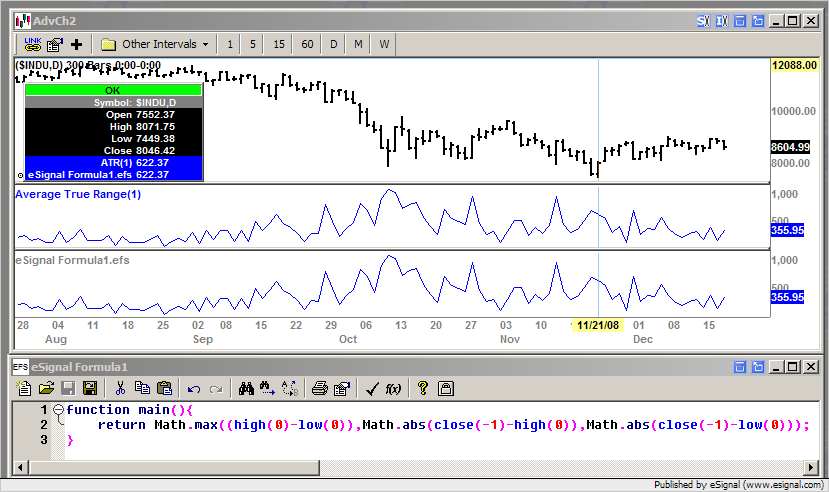I was wondering why the built-in ATR that comes with eSignal gives a different result than if the ATR were calculated by the traditional method; Which is defined as follows:
True Range is the greatest of the following three values:
· difference between the current maximum and minimum (high and low);
· difference between the previous closing price and the current maximum;
· difference between the previous closing price and the current minimum.
When I import raw data from eSignal into Excel and calculate the ATR based on the above criteria, I get a different result than the ATR eSignal provides.
Is their different ways of calculating ATR or is their a problem with eSignal's ATR calculation?
I am using eSignal 8.0, Build 779.
True Range is the greatest of the following three values:
· difference between the current maximum and minimum (high and low);
· difference between the previous closing price and the current maximum;
· difference between the previous closing price and the current minimum.
When I import raw data from eSignal into Excel and calculate the ATR based on the above criteria, I get a different result than the ATR eSignal provides.
Is their different ways of calculating ATR or is their a problem with eSignal's ATR calculation?
I am using eSignal 8.0, Build 779.

Comment